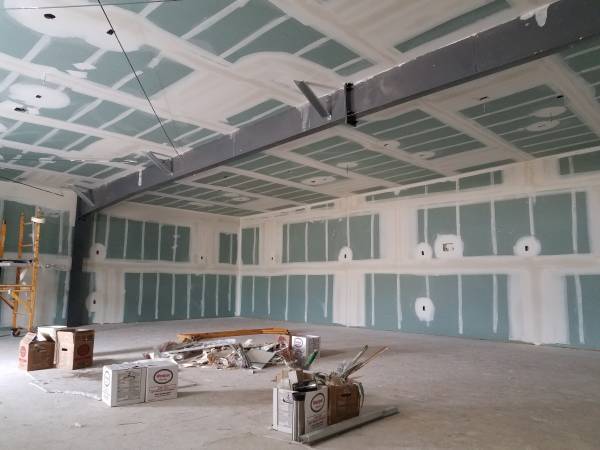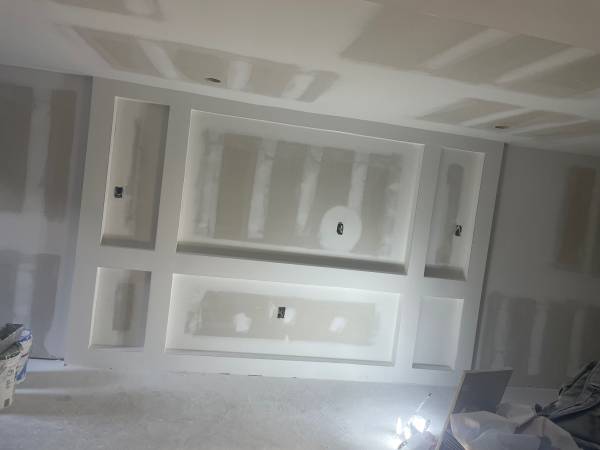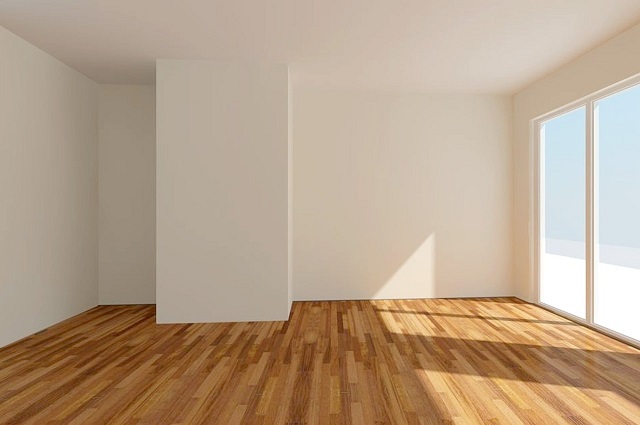Table of Contents
Proper Preparation is Key
Proper preparation is the foundation upon which successful drywall taping projects are built. Rushing through this critical stage can lead to a cascade of issues down the line, resulting in uneven surfaces, visible seams, and costly rework. Thoroughly assessing the condition of the walls, ensuring they are clean, dry, and free of any defects or obstructions, is imperative before beginning the taping process.
Additionally, gathering all the necessary tools and materials beforehand not only streamlines the taping process but also minimizes delays and interruptions during the project. From joint compound and drywall tape to taping knives and sandpaper, having everything within reach allows for a more efficient workflow and ensures that each step is executed with precision. By investing time and effort in meticulous preparation, you set the stage for a smoother, more successful drywall taping experience.
Different Types of Drywall Tape
Mesh drywall tape is a popular option known for its ease of use and flexibility. This type of tape is self-adhesive and can quickly cover joints, cracks, and corners. It is lightweight and resistant to mold. However, mesh tape is not as strong as paper tape and may not be the best choice for high-stress areas.
On the other hand, paper drywall tape is durable and provides excellent reinforcement for seams. This type of tape requires embedding in joint compound and is suitable for butt joints and flat seams. Paper tape is less prone to wrinkling and bubbling compared to mesh tape. It may take longer to apply and requires additional skill to achieve a smooth finish, but it is often preferred for its strength and reliability.
Choosing Joint Compound
When it comes to choosing the right joint compound for your drywall taping project, there are a few key factors to consider. First and foremost, you’ll want to select a joint compound that is specifically designed for taping and finishing drywall. Look for a product that offers good adhesion, easy sanding properties, and minimal shrinkage when it dries. Additionally, consider the setting time of the compound – whether it’s quick-drying or requires more time to cure – to ensure it aligns with your project timeline.
Another important consideration when selecting a joint compound is the type of finish you want to achieve. If you’re aiming for a smooth, seamless surface, a lightweight all-purpose joint compound may be the best option. On the other hand, if you need to fill in larger gaps or cracks, a heavyweight joint compound with added strength might be more suitable. Ultimately, the right joint compound for your project will depend on the specific requirements of the job and your skill level as a taper.
Tools for Drywall Taping
To efficiently tackle a drywall taping project, having the right tools at your disposal is essential. The basic tools required for drywall taping include a drywall knife (both 4-inch and 12-inch sizes are commonly used), a taping knife, a corner trowel, and a mud pan. These tools are essential for smoothly applying joint compound and tape to achieve seamless joints and corners. Additionally, having a utility knife for cutting drywall tape, sanding blocks for preparing surfaces between coats, and a ladder for reaching high areas is crucial for a successful taping job.
In addition to the basic tools, having a rasp for roughing up edges, a drywall saw for cutting drywall pieces, and a corner roller for applying tape to corners are also beneficial for achieving professional results. It is important to ensure that all tools are clean and in good condition before starting the taping process to avoid any hindrances or imperfections in the final finish. By investing in high-quality tools and maintaining them properly, you will be better equipped to handle drywall taping projects with ease and precision.
Measuring and Cutting Drywall Tape
To ensure a seamless and professional finish when working with drywall tape, proper measurement and cutting are essential steps that cannot be overlooked. Before starting the cutting process, it is crucial to accurately measure the length of tape needed for the specific joint or seam. Use a tape measure to determine the precise length, adding a little extra length to allow for any adjustments during application.
Once the measurement is taken, carefully cut the drywall tape using a sharp utility knife or drywall scissors. Make sure to use a straightedge as a guide to create clean and straight cuts. Avoid using dull blades as they can result in jagged edges that may affect the overall appearance of the tape joint. Take your time during this step to ensure accuracy, as any mistakes in measurement or cutting can lead to uneven joints and visible seams in the finished project.

Applying Drywall Tape
To ensure a successful drywall taping job, mastering the techniques for applying drywall tape is essential. Begin by applying a thin layer of joint compound along the seam where the tape will be placed. Press the drywall tape firmly into the compound using a drywall knife or trowel, making sure it is centered along the seam. Gently smooth out any wrinkles or bubbles to ensure a tight bond between the tape and the drywall surface.
Once the tape is in place, add another thin layer of joint compound over the top, also known as embedding the tape. Using long, smooth strokes, spread the compound evenly over the tape and feather the edges to create a seamless transition between the tape and the drywall. It’s crucial to work efficiently to avoid the compound drying out, which can lead to uneven surfaces and visible lines. Mastering the proper techniques for applying drywall tape will set the foundation for a flawless finish in your drywall taping project.
Achieving Smooth Joints
To achieve smooth joints when taping drywall, one crucial tip is to ensure that you feather out the joint compound to create a seamless transition between the tape and the wall surface. Feathering involves spreading the compound thinly beyond the edges of the tape to blend it with the drywall, avoiding any visible lines or bumps. This technique is essential in achieving a professional finish that will ultimately result in a flawless wall surface.
Another key tip for achieving smooth joints is to consistently apply thin layers of joint compound, allowing each layer to dry completely before adding the next one. Building up the compound gradually helps to prevent excessive buildup, which can lead to uneven surfaces and require more sanding and rework. By taking your time with each layer and ensuring it is smooth and evenly applied, you can avoid the common issue of lumps and ridges that can detract from the overall quality of the finished drywall surface.
Corners and Angles
When dealing with corners and angles in drywall taping, precision and attention to detail are crucial for achieving a seamless finish. Corners can be particularly challenging due to the sharp angles and varying depths. To tackle inside corners, start by embedding the tape into the corner using a putty knife, ensuring it sits flush against both walls. For outside corners, use a corner tool to create a clean edge before applying the joint compound. Working methodically and ensuring proper coverage along the corners will result in a professional-looking finish that is both durable and visually appealing.
Angles present another obstacle in drywall taping, requiring careful consideration and skillful application. When taping angled areas, it is important to taper the joint compound to match the angle of the wall for a smooth transition. Use a drywall knife or trowel to feather the compound gradually, blending it seamlessly with the surrounding surface. Taking the time to build up thin layers of compound and feathering each application will help to avoid unsightly bumps or ridges, ensuring a flawless result that enhances the overall appearance of the finished project.
Common Drywall Taping Mistakes
When tackling a drywall taping project, it’s common to encounter mistakes that can disrupt the smooth finish you’re aiming for. One common error is not applying enough joint compound beneath the tape, leading to poor adhesion and visible tape lines. To address this issue, ensure that you spread an even layer of joint compound over the seam before embedding the tape, pressing it firmly into the compound to eliminate air bubbles.
Another frequent mistake is applying too much joint compound, resulting in excess material squeezing out from underneath the tape. This can cause an uneven surface and require additional sanding to correct. To avoid this, use a moderate amount of joint compound, just enough to cover the tape without creating excess buildup. Remember, the key to successful taping is achieving a balance between enough compound to secure the tape and not overdoing it to the point of creating unnecessary work during the finishing stages.
Sanding Between Coats
Sanding between coats is a critical step in the drywall taping process that should not be overlooked. It plays a vital role in achieving a smooth and seamless finish on your walls or ceilings. By meticulously sanding the joint compound between each coat, you are not only leveling out any imperfections but also creating a surface that is conducive to proper adhesion for subsequent layers of tape and compound. This meticulous attention to detail ensures that the final result is professional-looking and free of any visible seams or ridges.
Furthermore, sanding between coats helps to blend the different layers of joint compound seamlessly, allowing for a more uniform and cohesive appearance once the taping process is complete. It is essential to use fine-grit sandpaper and apply gentle pressure when sanding to avoid damaging the underlying layers of tape and compound. This process may be time-consuming, but the end result is well worth the effort, as it sets the foundation for flawless and durable drywall surfaces that will stand the test of time.
Applying Multiple Layers of Tape
To ensure strong and durable joints, applying multiple layers of drywall tape is often necessary. After the initial layer of tape and joint compound has dried, it is common practice to add a second and sometimes even a third layer to reinforce the seam. Each subsequent layer should be wider than the previous one, gradually feathering out the joint compound to create a smooth transition between the taped area and the rest of the wall.
When applying multiple layers of tape, it’s important to allow sufficient drying time between each application. Rushing this process can result in a weaker bond and may lead to cracks or separation down the line. Additionally, taking the time to feather out the joint compound and blend it seamlessly with the surrounding wall surface will ultimately result in a professional finish. Paying attention to detail and building up the layers gradually will help achieve a strong, smooth, and long-lasting drywall joint.
Proper Drying Time
After applying each layer of drywall tape and joint compound, it is crucial to allow sufficient drying time before moving on to the next step. Rushing this process can result in gaps, cracks, or even tape lifting, which will require additional repairs and prolong the overall project timeline. Proper drying time ensures that each layer sets and adheres firmly, creating a solid foundation for the next application. It also allows any moisture to evaporate, preventing bubbling or wrinkling in the tape and compound. Patience during this phase will ultimately lead to a smoother, more professional-looking finish.
The exact drying time will vary depending on factors such as humidity levels, temperature, and the type of joint compound used. As a general rule of thumb, it is recommended to wait at least 24 hours between each coat of joint compound. However, it is crucial to follow the manufacturer’s instructions for the specific product being used, as some compounds may require longer drying times. Additionally, using fans or dehumidifiers can help expedite the drying process, but be cautious not to create a draft that could cause uneven drying or cracking. Remember, taking the time to ensure proper drying will result in a high-quality end result that will stand the test of time.
Skim Coating and Feathering
When it comes to achieving a flawless finish on your drywall project, skim coating and feathering are essential techniques to master. Skim coating involves applying a thin layer of joint compound over the entire surface to create a smooth and uniform appearance. This process helps to fill in any imperfections and create a seamless foundation for painting or wallpapering. Feathering, on the other hand, involves blending the edges of the compound to create a gradual transition between the repaired area and the surrounding drywall.
To begin the skim coating process, start by applying a thin layer of joint compound using a taping knife or trowel. Work in small sections, spreading the compound evenly and smoothly across the surface. Once the entire area is covered, use a drywall knife to feather the edges by blending them into the surrounding drywall. Repeat this process as needed to achieve a uniform and seamless finish. Remember, patience and attention to detail are key when mastering skim coating and feathering techniques for professional-looking results.
How to Achieve a Professional Finish
To achieve a professional finish when working with drywall tape, attention to detail and precision are paramount. One crucial aspect is ensuring that each layer of tape is applied smoothly and evenly, with no air bubbles or creases. Taking the time to press the tape firmly into the joint compound will help create seamless joints that blend seamlessly with the surrounding drywall. Additionally, using the right tools, such as a drywall knife or trowel, can make a significant difference in achieving a polished look.
Another key element in achieving a professional finish is the technique used to feather the edges of the joint compound. Feathering involves gradually tapering the compound away from the taped area to create a smooth transition between the repair and the existing wall surface. This technique helps to eliminate visible seams and ensures that the finished surface is level and uniform. By mastering the art of feathering, you can elevate the overall appearance of your drywall project and create a professional finish that is sure to impress.
Maintaining and Repairing Drywall Tape
To keep drywall tape in good condition, regular maintenance is essential. Inspect the tape periodically for any signs of peeling or cracking. If you notice any damage, promptly repair it to prevent further issues. Use a utility knife to cut away the damaged section of tape, apply a new layer of joint compound, and carefully embed the replacement tape. Smooth out the edges and allow it to dry completely before sanding and painting over the area. By addressing maintenance needs promptly, you can prolong the lifespan of your drywall tape and maintain a professional-looking finish.
When repairing drywall tape, it is crucial to match the type of tape and joint compound used in the original installation. Failure to do so can result in visible inconsistencies in texture and finish. Take the time to carefully remove any damaged tape, ensuring clean edges for a seamless repair. Apply a thin layer of joint compound over the area using a taping knife, embedding the new tape securely. Smooth out any excess compound and feather the edges to blend with the surrounding surface. Allow the repair to dry completely before sanding and finishing to achieve a cohesive appearance throughout the wall.


